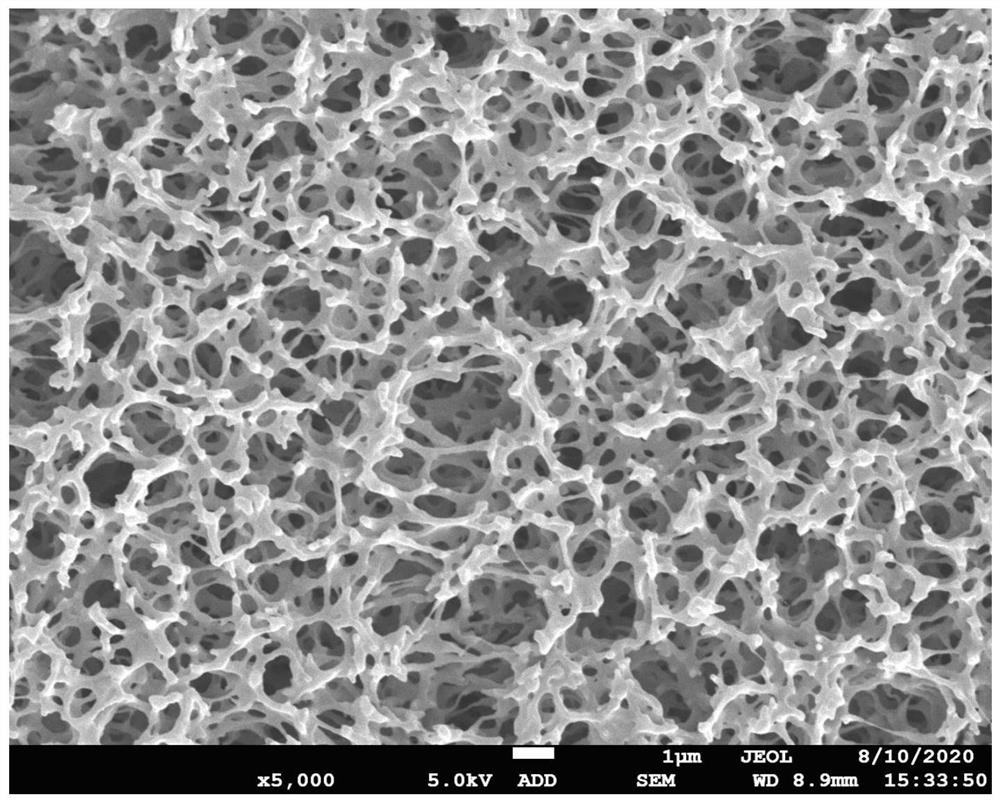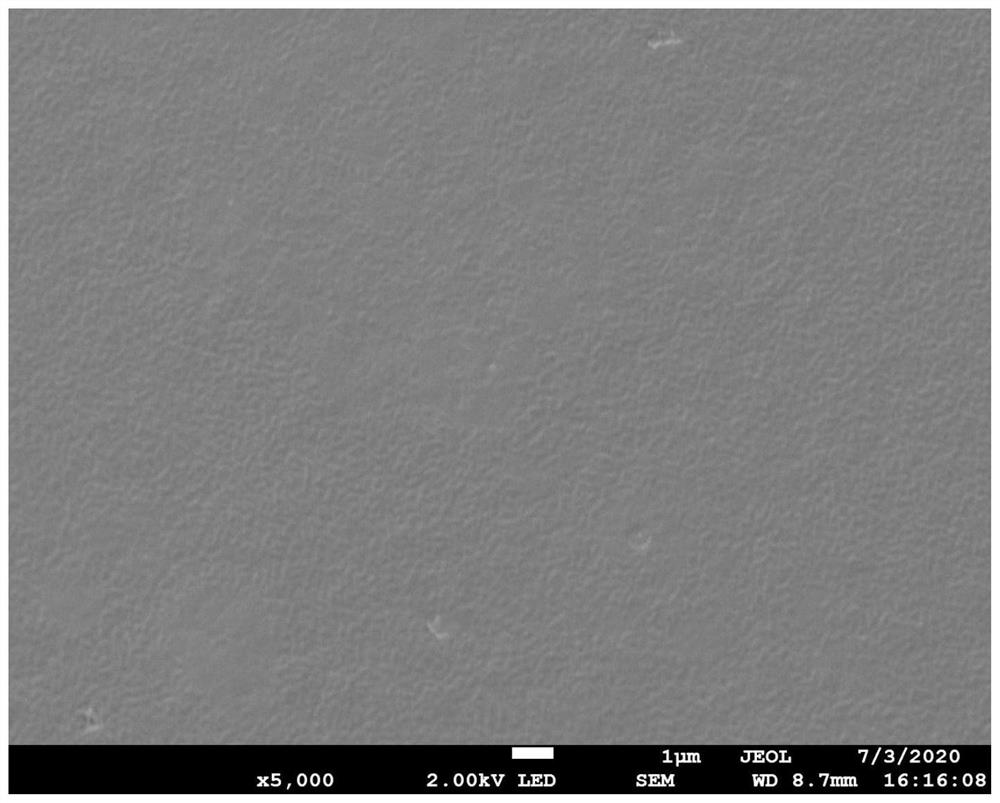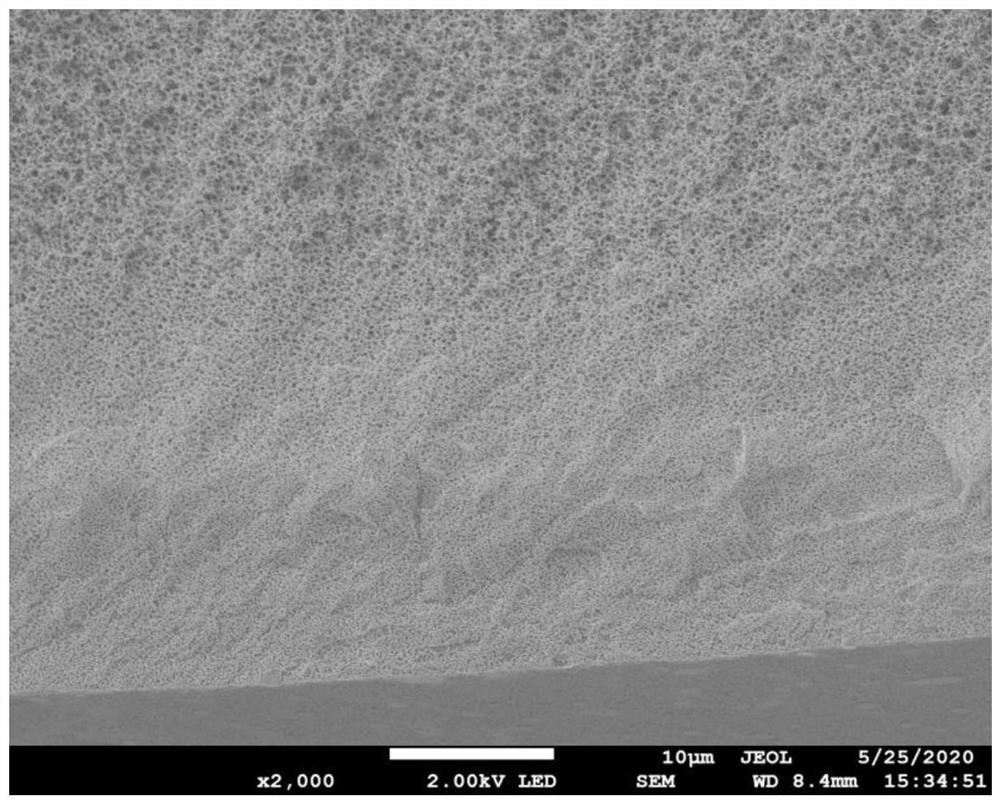Poly(4-methyl-1-pentene) hollow fiber membrane with gradient pore structure and preparation method thereof
A gradient pore and pentene technology, applied in chemical instruments and methods, membrane technology, semi-permeable membrane separation, etc., can solve the problems of continuous and stable production of high-performance poly hollow fiber membranes, affecting the safety of fiber membranes, and phase separation Difficulty in controlling crystallization behavior
- Summary
- Abstract
- Description
- Claims
- Application Information
AI Technical Summary
Problems solved by technology
Method used
Image
Examples
Embodiment 1
[0035] The preparation method of poly(4-methyl-1-pentene) hollow fiber gradient pore membrane is carried out through the following steps:
[0036] 1) Preparation of casting solution: mix poly(4-methyl-1-pentene) with a mass fraction of 25%, dibutyl adipate with a mass fraction of 70%, and propylene glycol with a mass fraction of 5% as Casting solution;
[0037] 2) Extrusion molding: Extrude the casting solution described in step 1) into a hollow fiber shape through a twin-screw extruder at 250°C at a speed of 80m / min;
[0038] 3) Phase separation and solidification: the hollow fiber described in step 2) is cooled in a water bath at a temperature of 30°C for 2 seconds after passing through an air section at 25°C for 10 ms, poly(4-methyl-1-pentene) / diluted The solvent system undergoes thermal-induced phase separation and non-solvent-induced phase separation at the same time, and then solidifies to form a film;
[0039] 4) extracting and removing the diluent: immersing the memb...
Embodiment 2
[0042] The mass fraction of poly(4-methyl-1-pentene) in the preparation of the casting solution in step 1) of Example 1 is increased to 30%, and the mass fractions of dibutyl adipate and propylene glycol are respectively reduced to 65.3% and 4.7% , with other conditions unchanged.
Embodiment 3
[0044] In step 1) of Example 1, dibutyl adipate was replaced by tributyl phosphate in the preparation of the casting solution, the mass fraction was reduced to 45%, the mass fraction of propylene glycol was increased to 30%, and other conditions remained unchanged.
PUM
| Property | Measurement | Unit |
|---|---|---|
| thickness | aaaaa | aaaaa |
| pore size | aaaaa | aaaaa |
| thickness | aaaaa | aaaaa |
Abstract
Description
Claims
Application Information
 Login to View More
Login to View More - R&D
- Intellectual Property
- Life Sciences
- Materials
- Tech Scout
- Unparalleled Data Quality
- Higher Quality Content
- 60% Fewer Hallucinations
Browse by: Latest US Patents, China's latest patents, Technical Efficacy Thesaurus, Application Domain, Technology Topic, Popular Technical Reports.
© 2025 PatSnap. All rights reserved.Legal|Privacy policy|Modern Slavery Act Transparency Statement|Sitemap|About US| Contact US: help@patsnap.com



